STS-46
This article includes a list of general references, but it remains largely unverified because it lacks sufficient corresponding inline citations. (May 2008) |
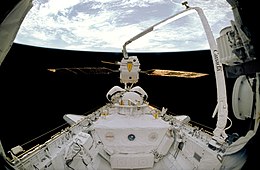 Atlantis's Canadarm grapples the European Space Agency's EURECA satellite, prior to its deployment | |
| Mission type | Satellite deployment Technology |
|---|---|
| Operator | NASA |
| COSPAR ID | 1992-049A |
| SATCAT no. | 22064 |
| Mission duration | 7 days, 23 hours, 15 minutes, 3 seconds[1] |
| Distance travelled | 5,344,643 kilometres (3,321,007 mi) |
| Orbits completed | 127 |
| Spacecraft properties | |
| Spacecraft | Space Shuttle Atlantis |
| Landing mass | 94,676 kilograms (208,725 lb) |
| Payload mass | 12,164 kilograms (26,817 lb) |
| Crew | |
| Crew size | 7 |
| Members |
|
| Start of mission | |
| Launch date | 31 July 1992, 13:56:48 UTC |
| Launch site | Kennedy LC-39B |
| End of mission | |
| Landing date | 8 August 1992, 13:11:50 UTC |
| Landing site | Kennedy SLF Runway 33 |
| Orbital parameters | |
| Reference system | Geocentric |
| Regime | Low Earth |
| Perigee altitude | 425 kilometres (264 mi) |
| Apogee altitude | 437 kilometres (272 mi) |
| Inclination | 28.45 degrees |
| Period | 93.2 min |

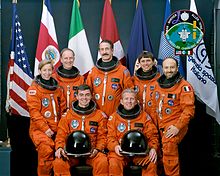 Left to right – Seated: Allen, Shriver; Standing: Ivins, Nicollier, Hoffman, Chang-Diaz, Malerba Space Shuttle program | |
STS-46 was a NASA Space Shuttle mission using Space Shuttle Atlantis and was launched on 31 July 1992 at 9:56:48 am EDT.
Crew[]
| Position | Astronaut | |
|---|---|---|
| Commander | Third and last spaceflight | |
| Pilot | First spaceflight | |
| Mission Specialist 1 | First spaceflight | |
| Mission Specialist 2 | Second spaceflight | |
| Mission Specialist 3 | Third spaceflight | |
| Mission Specialist 4 | Third spaceflight | |
| Payload Specialist 1 | Only spaceflight | |
Backup crew[]
| Position | Astronaut | |
|---|---|---|
| Payload Specialist 1 | First spaceflight | |
Crew seating arrangements[]
| Seat[2] | Launch | Landing | 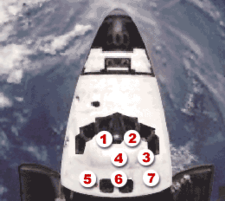 Seats 1–4 are on the Flight Deck. Seats 5–7 are on the Middeck. |
|---|---|---|---|
| S1 | Shriver | Shriver | |
| S2 | Allen | Allen | |
| S3 | Nicollier | Hoffman | |
| S4 | Ivins | Ivins | |
| S5 | Hoffman | Nicollier | |
| S6 | Chang-Diaz | Chang-Diaz | |
| S7 | Malerba | Malerba |
Mission highlights[]
The mission's primary objectives were the deployment of the European Space Agency's EURECA (European Retrievable Carrier) and the joint NASA/Italian Space Agency Tethered Satellite System (TSS). EURECA was deployed a day later than scheduled because of a problem with its data handling system. Seven and a half hours after deployment, the spacecraft's thrusters were fired to boost EURECA to its planned operating altitude of around 310 miles. However, thruster firing was cut to six minutes from 24 minutes because of unexpected attitude data from the spacecraft. The problem was resolved, and EURECA was successfully boosted to its operational orbit on the mission's sixth day. TSS deployment also was delayed one day because of the problems with EURECA. During deployment, the satellite reached a maximum distance of only 860 feet from the orbiter instead of the planned 12.5 miles because of a jammed tether line. After numerous attempts over several days to free the tether, TSS operations were curtailed, and the satellite was stowed for return to Earth. It would be reflown in 1996 on STS-75.
Secondary payloads included the Evaluation of Oxygen Integration with Materials/Thermal Management Processes (EOIM-III/TEMP 2A), Consortium for Materials Development in Space Complex Autonomous Payload (CONCAP II and CONCAP III), IMAX Cargo Bay Camera (ICBC), Limited Duration Space Environment Candidate Materials Exposure (LDCE), Air Force Maui Optical Site (AMOS), Pituitary Growth Hormone Cell Function (PHCF), and the Ultraviolet Plume Instrument (UVPI). The mission was extended by a day in order to complete scientific objectives.
STS-46 marked the 150th human spaceflight to achieve orbit.
Gallery[]

EURECA after deployment
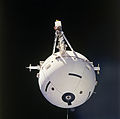
TSS satellite
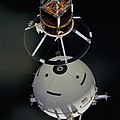
TSS deployment

TSS deployment
See also[]
- List of human spaceflights
- List of Space Shuttle missions
- Outline of space science
- Space Shuttle
References[]
External links[]
![]() This article incorporates public domain material from websites or documents of the National Aeronautics and Space Administration.
This article incorporates public domain material from websites or documents of the National Aeronautics and Space Administration.
- Space Shuttle missions
- Spacecraft launched in 1992








